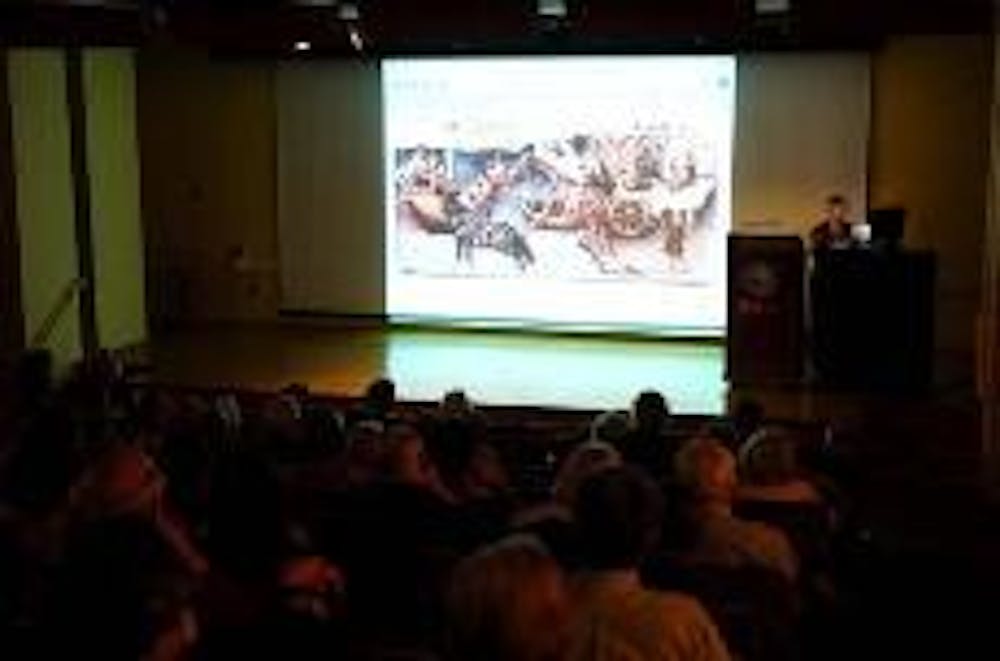According to Alison Stones, Wharton may have a thing or two to learn from the medieval clergymen who founded the Santiago pilgrimage.
Santiago managed to attract pilgrims from across Europe to see relics that didn't even exist.
"It is absolutely fascinating how they successfully launched a commercial venture," she said. "It is the biggest con job of the Middle Ages."
Stones, a history of art and architecture professor at the University of Pittsburgh, discussed the Cathedral at Santiago de Compostela in northwest Spain - a great pilgrimage site of the Middle Ages in Europe - for about 150 people Wednesday at the University Museum.
Santiago is the resting place of a head marked as belonging to "St. James." What it doesn't say, Stones said, is that the head belongs to St. James the Less, not the more famous St. James the Great, a disciple of Jesus.
Stones estimates that thousands of medieval pilgrims made the journey annually, stopping at any number of hospitals along the way and purchasing cockle shells, which are often associated with St. James.
"Pilgrimage . is all about relics," Stones said.
However, pilgrims expecting to see relics at Santiago would be disappointed.
The monks "made it up," she said, adding that the pilgrims were told that the non-existant relics were hidden under an altar.
A 12th century pilgrim's guide, which outlined four distinct routes to the site, provided the focus for Stones' talk.
The guide included places of interest along the way and tips to ensure a safe journey. It also warned travelers about members of the Basque ethnic minority, who it claimed were so wicked that they fornicated with animals.
Stones said people continue to make the pilgrimage today because it "satisfies a spiritual need."
Today, like in the Middle Ages, Santiago is "a fantastic sell job," she said.
Stones spoke on behalf of the Penn Humanities Forum, which brings speakers to campus to discuss various social topics. This year's Forum topic is travel.
Penn alumna Elizabeth Gemmill, who attended the talk, said she made the pilgrimage to Santiago on a bicycle and brought back a bracelet bearing St. James' cockle shell.
"You get [a] certificate if you are a pilgrim," she said, adding that her trip was "a wonderful experience."



